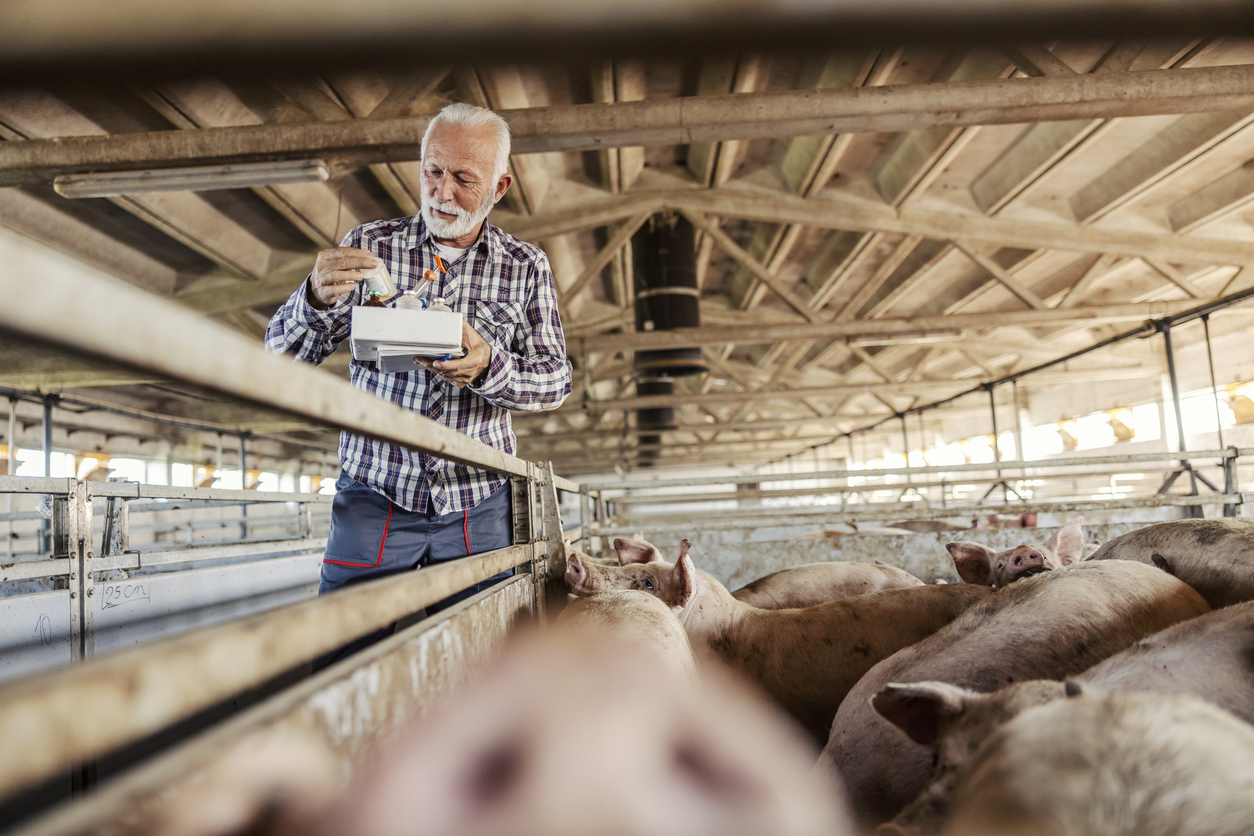In a study published in early 2022, an international team of researchers presented what remains the most comprehensive assessment yet of the toll of antimicrobial resistance (AMR) on human health.
Using data from 204 countries, the researchers estimated that 4.95 million deaths in 2019 were associated with AMR, with 1.27 million of those deaths directly attributable to a drug-resistant infection. Those figures place AMR ahead of such leading infectious disease killers as malaria and HIV.
Estimates of AMR's future impact paint an even bleaker picture. A 2014 report by British economist Lord Jim O'Neill and the Wellcome Trust estimates that if AMR is not addressed, drug-resistant pathogens could cause an estimated 10 million deaths a year by 2050.
Encouraging the medical community, world leaders, and other stakeholders to do their part in staving off that grim future is one of the goals of World AMR Awareness Week, a global campaign of the World Health Organization (WHO) this week aimed at raising public awareness and promoting practices that help mitigate the threat posed by drug-resistant infections.
CIDRAP News recently submitted a series of questions to WHO officials about the themes of this year's World AMR Awareness Week, their assessment of the progress that countries have made in addressing AMR, and the challenges that lay ahead. Responses were provided by Sarah Sheppard, the WHO's communications lead for Medicines, Health Products & AMR.
The conversation has been edited for length and clarity.
CIDRAP News: The theme of this year's World AMR Awareness Week is "Preventing antimicrobial resistance together." What is the message that the WHO wants to convey?
Sarah Sheppard, WHO: Preventing AMR requires collective action from all sectors of society. The misuse and overuse of antimicrobials primarily drive AMR, which happens in multiple sectors. To effectively reduce AMR, all sectors must use antimicrobials prudently and appropriately, and take preventive measures to decrease the incidence of infections.
We need a whole-of-society and multisectoral approach to tackle this global issue effectively. We also need each sector to be adequately resourced so that they can effectively prioritize, cost, and implement their priority actions within their specific sectors and then monitor the impact.
CIDRAP News: A multisectoral approach is critical to the One Health concept, which recognizes the interconnection among people, animals, plants, and their shared environment. Do you feel that countries are embracing the One Health idea in their efforts to address AMR?
Sarah Sheppard, WHO: Countries are very aware that addressing AMR will require a multisectoral One Health approach and have therefore developed multisectoral AMR coordination committees and multisectoral AMR national action plans. Around 171 countries now have multisectoral AMR national action plans.

However, most countries have also identified multisectoral coordination, funding, and governance as key challenges impacting their AMR response. In addition, there needs to be greater awareness that the One Health approach does not preclude strong sector-specific strategies and plans. Ultimately, the capacities of each sector must be enhanced to be able to generate evidence, and then use the data collaboratively across sectors to develop both sector-specific and One Health policies and plans to mitigate the impact of AMR.
CIDRAP News: A global action plan to tackle AMR was endorsed at the World Health Assembly in 2015, and the United Nations General Assembly (UNGA) followed in 2016 with a political declaration on AMR. What progress has been made since then?
Sarah Sheppard, WHO: Progress in the implementation of the multisectoral AMR national action plans, which have been built based on the blueprint provided by the global action plan, has been monitored since 2016 through the annual Tracking AMR Country Self-assessment Survey (TrACSS).
Data received from countries show that progress has been slow, ad-hoc, and that the interdependence of various workstreams is not being considered. Based on TrACSS 2022 data, only 24% of the countries report effective implementation of their national action plans, only 10% report allocating dedicated financing, and 51% report that their multisectoral coordination mechanisms are not functional.
In the human health sector, the technical area that has shown the greatest progress has been the establishment of AMR surveillance systems. The WHO Global Antimicrobial Resistance and Use Surveillance System (GLASS) report for 2022 shows that 126 countries, territories, and areas participate in GLASS. Some progress has also been achieved in monitoring antimicrobial consumption and establishing antimicrobial stewardship (AMS) programs. Lastly, the complexity of AMR and the highly technical narrative has also impacted awareness, understanding, and, consequently, the level of political commitment and support.
To further expedite progress, WHO is developing an AMR strategic and operational priorities document for the World Health Assembly in May 2024, that will then support the UNGA High-level Meeting on AMR in September 2024.
CIDRAP News: What else would WHO like to see countries doing to address AMR?
Sarah Sheppard, WHO: WHO is launching a people-centered approach to addressing AMR in human health, as well as a core package of interventions to support countries in developing a programmatic approach to effectively implement the human health components of their AMR national action plans.
This approach is based on addressing the barriers and needs faced by people and the critical gaps in health systems. It is guided by the principles of equity, access, and leaving no one behind. It aims to make AMR as a health topic more accessible to policy makers by highlighting the impact on people, and it links AMR mitigation efforts with efforts to strengthen health systems and pandemic preparedness and response strategies.
Within the framework of their AMR national action plans, WHO would like countries to focus on six critical areas:
- Strengthen AMR governance and accountability, including allocation of adequate financing and support for awareness and education.
- Generate strategic information through surveillance of AMR and surveillance of antimicrobial consumption and use to guide patient care and action on AMR, and through research and innovation.
- Enhance access to prevention measures, including WASH (water, sanitation, and hygiene), IPC (infection prevention and control), and immunization.
- Enhance access to essential health services, including affordable AMR diagnosis and health services and uninterrupted supply of quality-assured, essential antimicrobials and health products.
- Enhance access to timely, accurate diagnosis and ensure bacteriology and mycology testing.
- Enhance access to appropriate and quality-assured treatment, through evidence-based treatment guidelines, AMS programs, and restrictions on the sale of non-prescription antimicrobials.
To support the implementation of 13 high-level core interventions, WHO will provide detailed guidance for various levels of the health systems in countries and relevant technical assistance.
CIDRAP News: There's a great deal of concern about the impact of AMR in low- and middle-income countries, and about the ability of those countries to implement, fund, and monitor national AMR action plans. What is the WHO doing to help these countries?
Sarah Sheppard, WHO: To support the implementation of AMR national action plans in low-and middle-income countries, WHO has developed a WHO AMR National action plan implementation handbook that provides step-by-step guidance to countries. In addition, specific technical tools and e-learning modules have been developed to build the capacity of countries to coordinate, plan, cost, implement, and monitor their plans.

Some of these national action plan tools include leadership skills training for effective multisectoral coordination to enhance AMR governance mechanisms, the AMR costing and budgeting tool to support countries in developing accurate budgets and resource mobilization plans, and guidance to facilitate monitoring and evaluation for AMR national action plans. An online WHO AMR Resource Pack has also been developed that provides all the available technical guidance documents to support countries in their implementation of their technical activities.
In 2023, more than 700 national staff in 41 countries have benefitted from the technical trainings, and over 9,000 people have enrolled in the relevant e-learning modules. WHO has also established an online AMR Community Exchange platform with more than 1,000 members to support peer-to-peer learning among technical staff from various countries and across various technical workstreams.
CIDRAP News: How concerned are you about the potential impact that climate change could have on AMR?
Sarah Sheppard, WHO: WHO has not yet developed any policy brief or technical document on AMR and climate change. This is being planned.
We are aware that climate change can exacerbate infections, including zoonotic diseases, impact water and sanitation, impact food security and food safety. Health emergencies caused by natural disaster associated with climate change can also result in the development and spread of AMR.




















